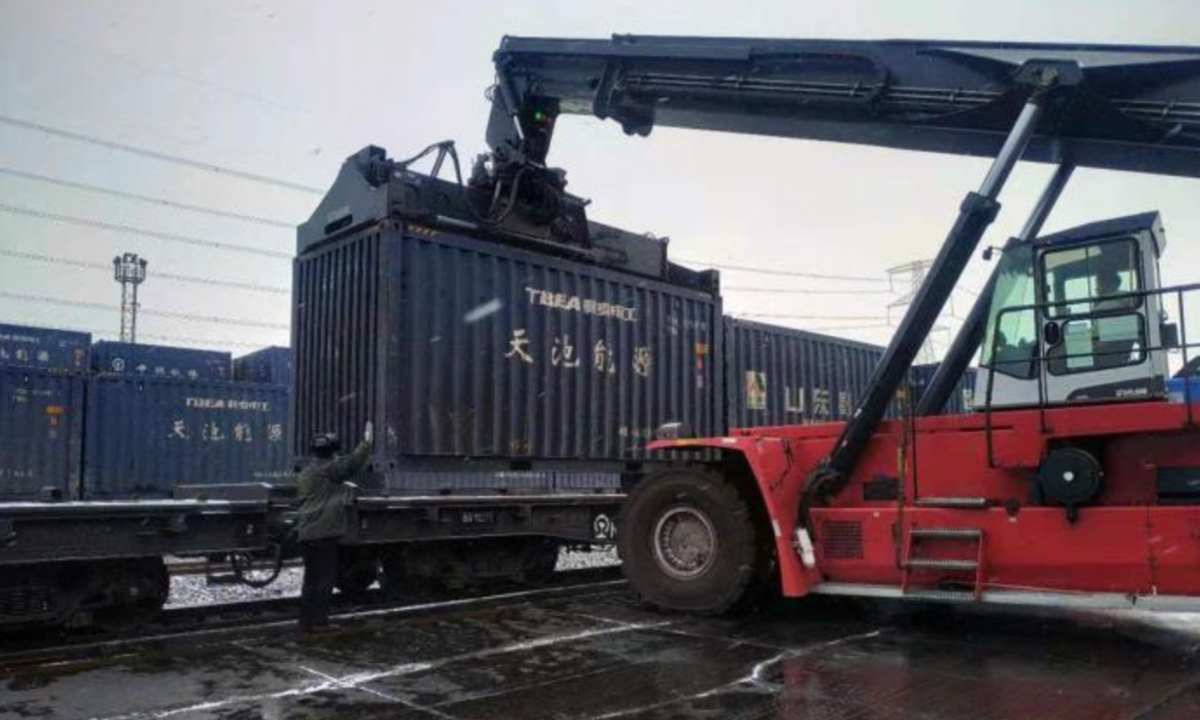Railway transportation in Xinjiang region completes annual target ahead of schedule

A freight train carrying coal Photo: Screenshot from Chinanews.com
Railway transportation in Northwest China's Xinjiang region has completed its annual work load target at 201.3 million tons set for the year eight days ahead of schedule on Friday, domestic news portal chinanews.com.cn reported over the weekend.
After a train carrying 5,000 tons of coal left Xinjiang for Southwest China's Sichuan Province on Friday, the Northwestern Chinese region has sent off cargoes weighing a total of 201.7 million tons in 2022, thus completing the annual transportation goal of region's railway authority.
As a gauge of economic development of the local economy, Xinjiang's railway cargo exceeded 100 million tons for the first time in 2018 and surpassed the 200 million ton level after four years, the report said, citing a local railway operator.
The volume tripled in six years, the report said.
Coal was a major item handled by railway authority in Xinjiang: during the period between January 1 to December 23 this year, Xinjiang's coal transportation increase by 29 percent year-on-year to 120 million tons and outbound coal transportation reached 52.33 million tons with an annual increase of 45.7 percent.
Currently, a total of 53 trains leave Xinjiang on a daily basis to ship coal to other western provinces in China, including Northwest China's Gansu Province and Southwest China's Yunnan Province.
Other items transported by the railway include chemicals, ore, and agricultural produce.
In addition, robust freight train service between China and Europe has driven the growth of foreign trade in the region.
A total of 6,077 China-Europe cargo freight trains went through the Alashankou Port, up 11 percent year-on-year, according to the report. A similar increase was seen at Khorgos Port, which saw train quantity hit 6,906 during the same period.
As the joint building of China-proposed Belt and Road Initiative continues to advance, Xinjiang is no longer a remote corner but has grown into a hot hub and Xinjiang's foreign trade with Central Asian countries increased rapidly.
In the first eleven months, Xinjiang's foreign trade topped 200-billion-yuan mark ($28.63 billion) to reach 219.4 billion yuan, up 59.8 percent year-on-year, according to a December 15 report by local news portal ts.cn that cited customs data.


